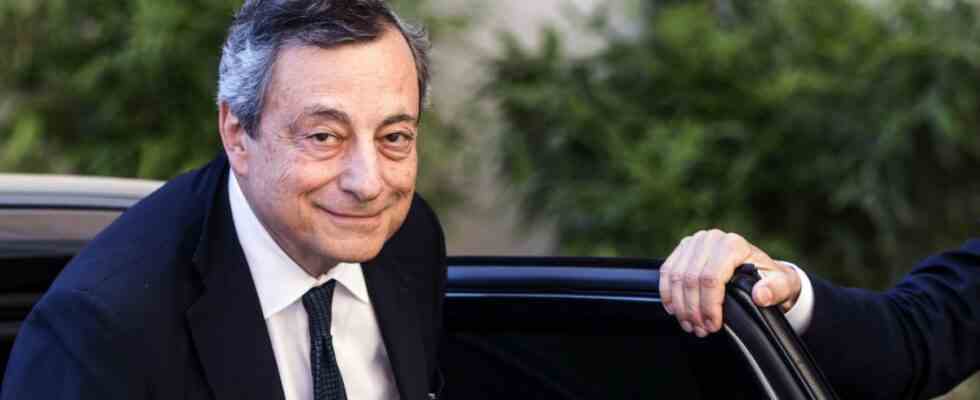In Germany, displeasure with the European Central Bank is growing. This is with good reason, because the monetary authorities have delayed the fight against high inflation for far too long. The first interest rate hike is now to be decided on Thursday. It would be the first in 11 years and would come much later than the rate hikes by the other major central banks. The hesitancy of ECB President Christine Lagarde and her team creates particular suspicion among some people because suspicion is in the air: the central bank wanted to keep interest rates low for as long as possible so as not to tighten the financing conditions for the euro state Italy deteriorate.
Italy again. At 2.5 trillion euros, the national debt is high in relation to economic strength, and the government under Prime Minister Mario Draghi is in danger of collapsing. The financial markets are alarmed, interest costs for Italy are rising, although not dangerously so. Nevertheless, the ECB wants to be prepared. The experts are working on a new rescue plan that is intended to nip the outbreak of a euro debt crisis 2.0 in the bud.
That Whatever it takes-The tenth anniversary of the promise made by former ECB President Draghi on July 26, when the Italian promised to “do everything” to save the euro – by buying bonds. This program has a catch, because distressed euro states would have to agree on a loan program with the ESM euro rescue package in advance. This is subject to strict economic policy conditions. It is hard to imagine that a large euro country like Italy would accept this gag.
The answer to this is not trivial, disputes are programmed
Hence the desire for a revision, Lagarde will present the outlines of the new rescue tool on Thursday. The problem is the same as in 2012: From what level of loan interest should the ECB support a euro state? When is this market interest rate for a government bond justified by the economic data, when is it an expression of exaggerated speculation on the stock exchanges?
The answer to this is not trivial, disputes are programmed. After the ECB decision, plaintiffs are likely to be found who will also submit the new rescue program to the Federal Constitutional Court and the European Court of Justice for examination. Beforehand, Bundesbank President Joachim Nagel had already criticized the situation: the ECB should not step in too lightly as a savior. Lagarde is facing a “Draghi moment” in Germany – the accusation that the ECB would finance countries through the back door from the printing press is being fueled. The criticism of the ECB as a savior in times of need is understandable. Protecting euro countries from bankruptcy is not one of the currency guardians’ core tasks. The central bank should take care of stable prices.
But you can’t turn back the previous development. If the ECB’s promise Whatever it takes collect and Lagarde based on the last Saxon king Friedrich August III. would call out to people: “Get rid of your dirt” – chaos would break out on the financial markets.
Times are turbulent enough as it is. A lot can change for the better, but it is also possible that the situation will deteriorate significantly due to an economic recession and the further escalation of the Ukraine war.
The ECB must prevent speculators from greed for profit triggering a second euro debt crisis. The political survival of a monetary union must not be decided solely on the stock exchanges: financial markets are sometimes efficient, but sometimes they are also completely crazy. It is therefore reasonable that the ECB has a rescue instrument ready for emergencies – for Italy and all other euro countries.
Turning your nose up at Italy in this context is out of the question anyway. Whether train, motorway bridges, Internet, airports – Germany cuts a bad figure in comparison. In addition, corona costs and the consequences of the energy crisis are also driving up national debt in this country: who knows, Germany too could one day be dependent on ECB aid.

